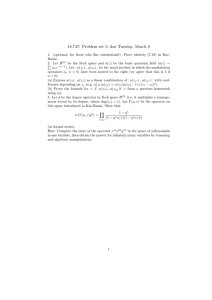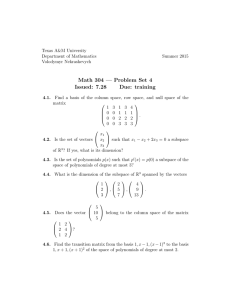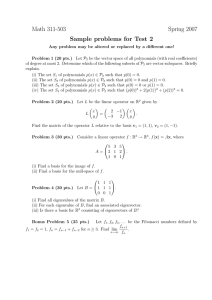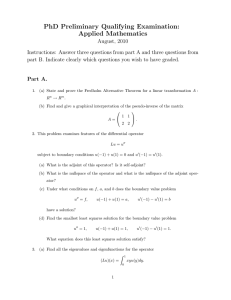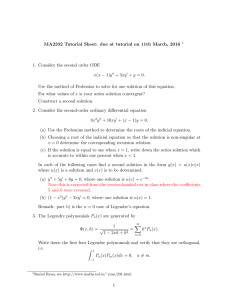Linear Algebra
advertisement
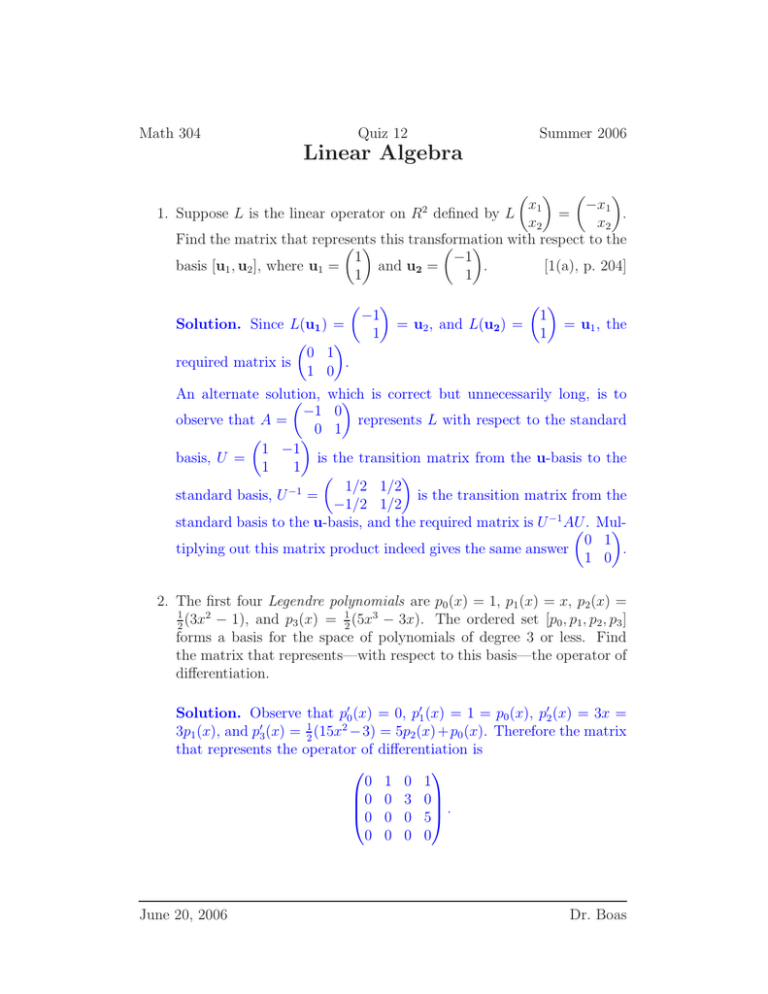
Math 304 Quiz 12 Summer 2006 Linear Algebra −x1 x1 . = 1. Suppose L is the linear operator on R defined by L x2 x2 Find the matrix that represents with respect to the this transformation 1 −1 basis [u1 , u2 ], where u1 = and u2 = . [1(a), p. 204] 1 1 2 Solution. Since L(u1 ) = 0 1 . required matrix is 1 0 −1 1 1 = u1 , the = u2 , and L(u2 ) = 1 An alternate solution, which is correct but unnecessarily long, is to −1 0 observe that A = represents L with respect to the standard 0 1 1 −1 basis, U = is the transition matrix from the u-basis to the 1 1 1/2 1/2 −1 standard basis, U = is the transition matrix from the −1/2 1/2 standard basis to the u-basis, and the required matrix is U −1 AU. Mul0 1 . tiplying out this matrix product indeed gives the same answer 1 0 2. The first four Legendre polynomials are p0 (x) = 1, p1 (x) = x, p2 (x) = 1 (3x2 − 1), and p3 (x) = 12 (5x3 − 3x). The ordered set [p0 , p1 , p2 , p3 ] 2 forms a basis for the space of polynomials of degree 3 or less. Find the matrix that represents—with respect to this basis—the operator of differentiation. Solution. Observe that p′0 (x) = 0, p′1 (x) = 1 = p0 (x), p′2 (x) = 3x = 3p1 (x), and p′3 (x) = 21 (15x2 −3) = 5p2 (x) + p0 (x). Therefore the matrix that represents the operator of differentiation is 0 1 0 1 0 0 3 0 0 0 0 5 . 0 0 0 0 June 20, 2006 Dr. Boas

